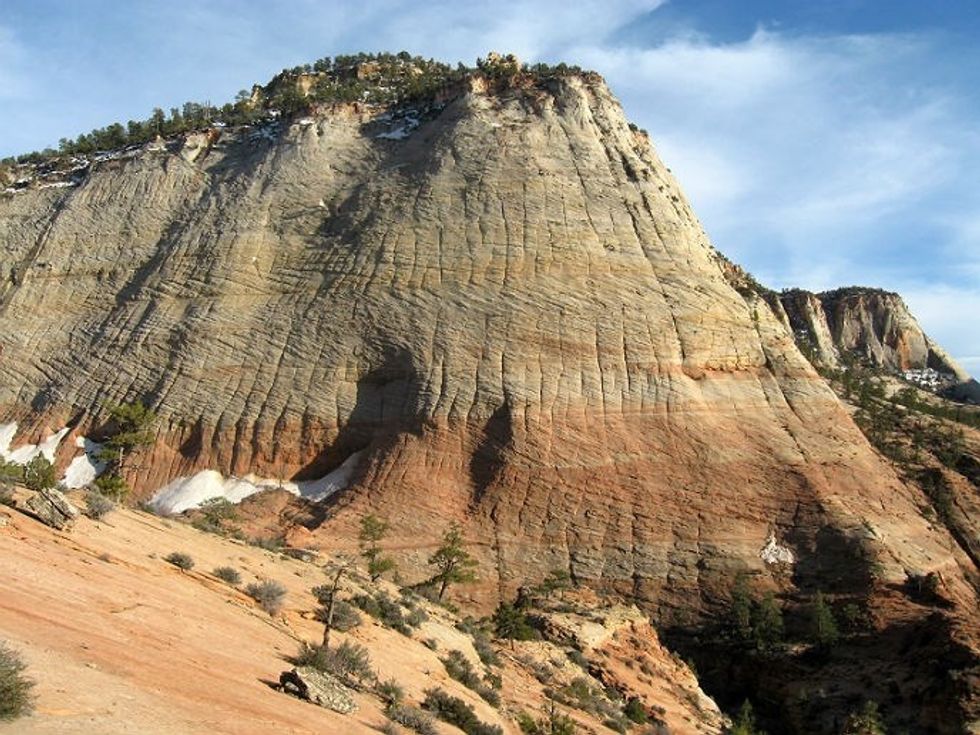Once Jolyana Kroupa, Arizona State University Navajo language professor, gave birth to her first son, she had a realization. She introduced him first by his Navajo clans, and this is when the lessons from her childhood really started to resonate with her.
When Kroupa would introduce her son by his clans, she said "it was powerful, and I thought 'gosh, this is just extremely amazing.'"
To Kroupa, this is just one of many reasons why knowing the Navajo language is so important.
The Navajo language has been considered an endangered language for decades, but with the 2020 U.S. Census coming up, the language may see it's lowest numbers yet.
In 2017, the Navajo Times reported the amount of fluent Navajo speakers that have been reported on the U.S. Census since 1980. The Navajo Times also reported that government officials are expecting the 2020 census to show around 30% of Navajo language speakers.
From 1980 to 2010, fluent speakers dropped from 93% to 51%. The most substantial drop occurred between 2000 and 2010, from 76% to 51%, according to the Navajo Times.
"It's very important for Diné people to learn the language. It is a crucial part of identity, language ties to culture. If there is no language, there is no culture," Kroupa said.
"Our language is the most powerful tool we have," said Shanna Yazzie, a Navajo community leader from Cameron, Ariz.
One example Kroupa gave of how language and culture are tied together is K'é. K'é is the foundation of Navajo culture, yet there is no direct translation of the word to English, Kroupa said.
"It really is the basis of being able to express where you truly come from," Kroupa said.
The closest word to K'é in English is kinship, but it is so much more, Kroupa said. K'é may seem surface level because "you really can't convey that relationship in English."
When you look at Diné (Navajo) way of life, there are so many terms, so many phrases that have such a strong meaning and it defines our culture, Kroupa said.
"As a language advocate, I really feel you are able to be more successful, know what direction you're going to go in life if you really understand where you come from," Kroupa said.
One of the issues with young people learning is the discouragement they may feel from their own community, Yazzie said.
"You will be discouraged quickly when someone such as an elder, your own family or siblings say a negative remark," Yazzie said. "It is up to you whether you want to let their comments derail or push you more."
"Our youth are knowledgeable, but we have to place our Navajo cultural education," said Richardson Etsitty, owner of Antelope Hogan Bed and Breakfast. "We plan on changing that in our community with enriched knowledge from everyone in our family community."
In a few generations young people are going to ask the young people now their questions and they can't say they don't know, since their grandparents never said that, Kroupa said.
Young people need to learn so that they can teach future generations, Kroupa said.
"I'm optimistic and I'm an observer of our youth today," Kroupa said. "I really feel there is a strong interest there, there is a movement that's happening. When I was growing up on the reservation, there wasn't a lot of pride in learning Navajo."
Kroupa said she sees young people wanting to know who they are and where they come from.
Etsitty, Kroupa and Yazzie all said that one of the best ways to learn Navajo is through elders.
"Take the colleges or high school classes, but the best way to learn is to be with only those who speak fluently," Yazzie said.
According to Kroupa, it is the wish of Navajo elders for the language to continue on.
"They prayed for time and memoriam that we continue this way of life," Kroupa said. "As young people it's our responsibility to ensure the existence of us as Diné people."
There are some tribes that only have a handful of speakers or no speakers. Navajo still has fluent speakers, so embrace and learn as much as you can, Kroupa said.
"Our language is so beautiful, it can make you cry," Yazzie said.











